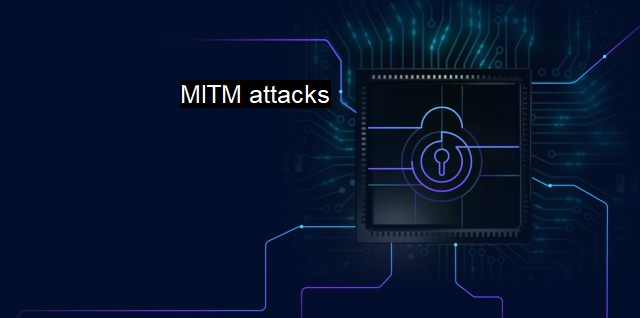What are MITM attacks?
MitM Attacks Unveiled: A Comprehensive Overview of Cybersecurity Threats and Antivirus Tools for Protection against Data Breaches
A Man-In-The-Middle (MITM) attack, as suggested by the terminology, involves a nefarious individual or entity placing themselves between two parties attempting to communicate online. It is a pervasive strategy in the cybersecurity battleground, replicating interactions with both the user and the provider to pilfer valuable information while depicting an innocuous exchange of data. The attacker interjects between the user's computer and the websites or systems that the user navigates on the Internet. This process makes it nearly impossible for the victims to realize that they are not interacting with the website directly but via an attacker trying to gather their data furtively.To start with, MITM attacks are one of the most common forms of network security breaches. The MITM paradigm follows a simple, yet effective strategy exploiting two fundamental aspects of any communication - information and trust. Attackers create authentic-looking websites or communication portals to trick innocent users, induce trust, and eventually successfully capture sensitive data.
A MITM attack can transpire in various methods, ranging from IP Spoofing, DNS Spoofing, SSL Hijacking to Email Hijacking, Wifi-Eavesdropping, and Replay.
IP Spoofing encompasses the forging of the IP address with the intention of concealing the source of an attack, making the traffic appear as though it is coming from a trusted source. DNS spoofing involves tricking a user into believing they are interacting with a website for which the DNS entry has been altered by an attacker.
SSL Hijacking happens when an attacker interferes with the SSL protocol that safeguards data in transit during an encrypted connection and makes users believe they are using a secure website when they are not. Email Hijacking ensues when an illicit actor gains command of your email account. This enables the attacker to send emails from your email address, possibly condoning further attacks like carrying out scams or obtaining sensitive data.
Antiviruses play a pivotal role in impeding MITM attacks by regularly scanning the network for any signs of unauthorized intrusion and running real-time protection on internet browsers. In some instances, antivirus software collaborates with a user’s Internet Service Provider to investigate the data being sent through, assessing and counteracting possible attacks before the data even arriving to the user's computer. Antiviruses also commonly rely on a threat database which isconsistently updated to explore any new tokens in communications that could imply a looming threat.
The multifaceted nature of antiviruses helps considerably in mitigating the risk of falling prey to an MITM attack, as they are designed to detect unusual activities, thereby preventing unauthorized access and protecting sensitive information. some antivirus software includes encryption capabilities, which ensures data transfer happens over secure channels, thereby reducing the vulnerability window in which MITM attacks occur.
In addition to offering comprehensive server protection, antivirus software keeps the ecosystem further secured through services such as identity protection, password managers or secure VPNs. Articulated alerts are triggered whenever an unusual activity is detected, making the antivirus reaction time more sensitive and thus delivering immediate security.
MITM attacks are formidable and can have serious implications for both individuals and businesses. Specific preventive actions can further mitigate these risks, such as: regularly updating and patching systems and application software, refraining from using public Wi-Fi networks when conducting sensitive transactions, maintaining secure backups of vital data, and employing multi-factor authentication. All these practices, in conjunction with a robust antivirus program, serve as a strong bulwark against MITM attacks.
Hence, the importance of understanding MITM attacks and showing intensified focus on antivirus software, cannot be emphasized sufficiently. It is an integral step towards enhancing cybersecurity infrastructure and ensuring that the realm of the digital world becomes a safer space for everyone to explore.

MITM attacks FAQs
What is a MITM attack?
A MITM (Man-in-the-Middle) attack is a type of cybersecurity attack where the attacker intercepts communication between two parties to eavesdrop, manipulate, or steal information.How does a MITM attack work?
In a MITM attack, the attacker intercepts the communication between two parties by inserting themselves in the middle of the communication channel. The attacker can then intercept, alter, or steal any information that is being transmitted between the two parties.How can I protect myself from a MITM attack?
To protect yourself from a MITM attack, you can use secure communication channels like VPNs, SSH, or SSL/TLS. You can also ensure that your antivirus software is up-to-date and use two-factor authentication wherever possible.What are the consequences of a MITM attack?
The consequences of a MITM attack can be severe, including theft of sensitive information like passwords, credit card details, and personal data. It can also lead to identity theft, financial loss, and damage to your reputation. Therefore, it's important to take appropriate steps to protect yourself from MITM attacks.| | A | | | B | | | C | | | D | | | E | | | F | | | G | | | H | | | I | | | J | | | K | | | L | | | M | |
| | N | | | O | | | P | | | Q | | | R | | | S | | | T | | | U | | | V | | | W | | | X | | | Y | | | Z | |
| | 1 | | | 2 | | | 3 | | | 4 | | | 7 | | | 8 | | |||||||